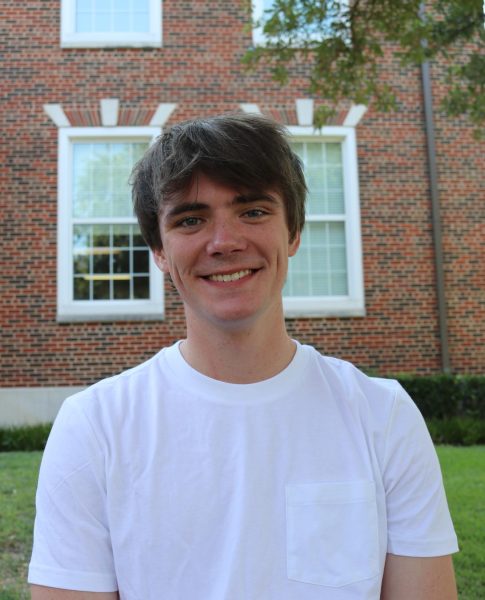Ahoy there, fellow treasure hunters! After witnessing the countless shipwrecks of live-action adaptations in the world of anime and manga, including the infamous “Dragonball Evolution” and “Cowboy Bebop,” I approached Netflix’s One Piece adaptation with cautious optimism. However, much to my delight, this adaptation has defied the odds and emerged as a shining beacon of hope for fans with its modified yet loyal script, grandiose sets, and a loveable cast.
The story follows our protagonist, Monkey D. Luffy, a young boy with a rubber body and big dreams, as he journeys across the ocean on an adventure to find the legendary treasure known as the One Piece and claim the renowned title of King of the Pirates. Having eaten an accursed fruit known as a devil fruit, granting Luffy mysterious rubber powers at the expense of his ability to swim, the charismatic pirate embarks on a legendary adventure, traveling to countless islands, making friends, gathering crewmates, and battling deadly foes along the way.
It’s no surprise that the live-action is extremely loyal to the original work as it was directed by One Piece fan Marc Jobst. In fact, it managed to fit almost all of the 95 chapters adapted into eight hours of screen time, a shocking feat as all of the seven arcs (parts of the story) covered in the show required wholly unique sets, environments, and characters. There were, of course, some arcs that had to be cut out to fit the eight-episode quota, but the fact that Jobst managed to fit so much into just eight hours was an absolute blessing for a lover of the series such as myself.
Entertainment company Dexterto did not exaggerate when they declared that “the popularity of the One Piece manga has far surpassed any [other] literary work.” Sitting at 516.6 million copies sold, manga artist Oda holds the title for the manga with the most copies sold of all time. And, according to entertainment analytics company Parrot Analytics, the demand for the One Piece anime is a whopping 40.7 times that of the average TV series in the United States as of Sept. 5. Of course, Oda has profited from this lucrative success, so money was the least of the author’s concerns going into the live-action.
In fact, the budget for each episode of the One Piece manga was gigantic, sitting at $18 million for each of the eight episodes, and it’s clear that this investment was put to good use. For comparison, the budget for Game of Thrones episodes in its final season was $15 million. The scale of every set in the live-action, from Foosha Village (Luffy’s hometown), to the Baratie (the sea kitchen) to the Going Merry (Luffy’s ship), is so massive that the show somehow manages to recreate the grand sense of adventure that Oda oh-so delicately composed throughout his manga.
To recreate the manga’s beautiful islands, which shift from the impending marine bases to quaint villages, the show was shot in a variety of locations around the globe. Ranging from the Canary Islands, Spain, to Quintana Roo, Mexico, to even all the way down to Cape Town, Africa, it would be an understatement to call the show anything but an international phenomenon. In Cape Town, the location where the majority of the show was shot, the remarkable architecture of the streets paired with its ocean’s beauty did wonders to help bring the One Piece world to life.
In my opinion, though, the live-action’s most impressive feat is its cast, hand-picked by Oda himself. Full of new blood in Hollywood, the straw hat pirate crew is made up of actors who, prior to training, were already near-perfect representations of the manga’s wacky, and sometimes tragic, characters. In fact, It’s almost as if Iñaki Godoy, the actor who plays Luffy, was hand-crafted by some higher power for this role. His goofy temperament, and contagious smile that seems to radiate light makes his role in the series feel less like one of an actor and more like a form of self-expression.
My favorite actor, Taz Skylar, cast as Sanji, had loyal fans of the series worried at first that he wouldn’t match the character’s energy, with his apparent lack of Sanji’s signature curly eyebrows and the introduction of a somewhat strong British accent. Despite these concerns, Skylar proved the fanbase wrong, mastering Sanji’s complex and traumatic character through nothing but hard work and dedication. While shooting, Skylar trained in taekwondo for two to three hours every morning and trained in the culinary arts every afternoon. He was so dedicated, in fact, that he cooked for the show’s whole cast while filming, embracing the role of Sanji with both body and heart.
In fact, almost all of the show’s cast is worthy of a spotlight, but the most impressive aspect of their performance is the crew’s compatibility. Each actor in the pirate crew, from the moment they met up, acted like lifelong friends, the most important quality for a group of actors aiming to replicate the complex dynamic between the Strawhat Pirates.
In my eyes, the One Piece live action is an absolute success. Breaking a long-standing curse with its grandiose sets and loveable cast, it should come as no surprise that season two has already been announced and is under development.




